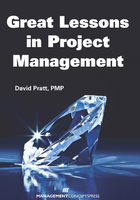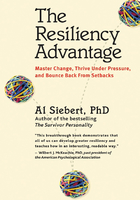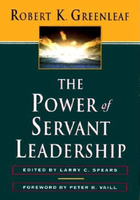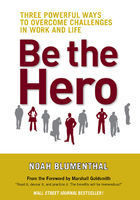We, the authors, have participated in excellent videoconferences that have left us breathless with the possibilities of this medium of communication. We have also participated in virtual meetings that made us shudder, cringe, and wonder if the world is ready to use this technology successfully.
We have written this book to share our more than forty years combined experience in training people how to run better meetings, make exciting presentations, and look good in front of cameras. Our goal is to help our readers avoid easy-to-make mistakes. These blunders not only detract from the effectiveness of videoconference meetings; mistakes also make people nervous about using videoconferencing (VC) and will therefore slow down the inevitable widespread use of videoconferencing in the business world.
Our lives have been spent in front of groups and in front of cameras; we have been interviewed hundreds of times on television. We have spent countless hours researching techniques that make people look effective. We know what works. And we also know what prevents people from leveraging this new medium of communication.
Once we understood the dynamics of the trends identified in chapter 1, we checked the literature to see what was available to help people create new habits that would take advantage of videoconferencing and appreciate the differences between in-person meetings and videoconferences.
We found precious little on the subject, and nothing that addresses the topics in-depth that are covered in this book. For example, a recent article by an interactive media consultant outlines seven steps for a “successful videoconference”—but never once mentions anything about presentation style. While we do not question the necessity of someone in the organization taking responsibility for technical aspects of setting up VC systems, these “steps for successful videoconferencing” have little to do with how individuals appear, perform, and leverage their time during the videoconference meeting itself. This particular list, and others like it, could apply equally well to successful implementation of Web browsers or e-mail systems.
When organizations experience failed videoconferences (or “video meetings” as they are sometimes called), even when the failure has nothing to do with the equipment, they tend to be gun-shy about approaching VC again. And they frequently do not like to admit it. Executives at a major retail company (who prefer to remain unidentified), for example, tell us they are unlikely to use their expensive VC equipment again because of poor experiences. We doubt their resolve will last. If nothing else, at some point their suppliers will force them into virtual meetings.
But these bashful retailers illustrate an important point. The technology has now reached the stage where picture and sound quality give VC many of the qualities of live, face-to-face meetings. In order for people to accept this newest communication device, however, they must look good and be positively rewarded for their participation. In order for this to happen, businesspeople must learn the skills necessary to perform well in front of a camera. Because of its current high quality and its obvious ability to save time and money, VC will become widely used if we can avoid presentation failures.
We do not recommend that people set standards that demand “perfect” videoconferences. After all, a meeting is a meeting, and if you are too concerned with looking good on camera, you may appear tense. However, because of the inherent power of being able to simultaneously transmit voice, visual images, and interactive data, avoiding failures is essential and demands that we acquire new habits for our videoconference meetings.
Videoconferencing is only one type of virtual meeting, a broad term that includes e-mail, data collaboration, Webcasting, Web conferencing, online chats, and white boarding. This book focuses solely on videoconferencing and the new habits that have to be learned in order to perform well when you can both see and verbally interact with others at another remote site in real time. Businesspeople today may videoconference right in the middle of another type of virtual meeting, such as when they are data collaborating. The skills available to readers of Smart Videoconferencing can definitely be applied to even the most minimal on-camera interaction.
New Habits for Virtual Meetings
Part of the challenge of VC is getting people to understand the unique aspects of videoconferencing technology. David Carlson, president of Affinity VideoNet in Essex, Massachusetts, puts it this way: “The hardest thing with videoconferencing is changing people's habits.”[1] Many people believe that a videoconference is the same as an in-person meeting except that it is accomplished from distant locations, and that they, therefore, do not need to do anything different than they would at an in-person meeting.
Based on dozens of interviews with users of VC technology, we have observed that people regularly make assumptions about videoconferencing—assumptions that unfortunately result in less-than-effective videoconferences. Many assume
That they should schedule a videoconference simply because they have the equipment.
That they can “wing” their virtual meetings in the same way they frequently prepare for their in-person meetings.
That all they have to do is show up for their meetings and they will be able to work effectively with VC equipment. This equipment can be your friend if you know a few things about it; it can also be your enemy if it is misused.
That what they see and hear in person is what their remote sites are seeing on their monitors. In fact, the way we act in front of a camera is amplified to remote site attendees and may not look at all like what you experience in person.
This book will introduce you to four solid habits—Habit 1: Leverage your choices, Habit 2: Think prime time, Habit 3: Make technology your friend, Habit 4: Maximize your presence—that address these faulty assumptions. The habits, which follow the introduction and three background chapters on videoconferencing, are tested and easy to implement. They will help you look your best, avoid the above pitfalls, and ensure that permanent records kept of your meetings will make you look good for a long, long time.
Each of the habits begins with a “big premise” that conceptually organizes the content that follows. The first habit, on leveraging your choices, helps you think through your options about whether or not to hold a videoconference. Habits 2 through 4 offer dozens of tips and ideas, which are explained with real-life examples.
If you are tempted to read the introduction and then immediately skip to the four habits, we strongly encourage you to return to the first section of the book entitled “What's It All About?” The information there will add depth to your understanding of the role of VC in today's modern business society.
The Need for Face-to-Face Meetings
We believe, along with many experts in the industry, that videoconferencing will never eliminate the need for face-to-face business meetings, particularly meetings with customers. Negotiating contracts or competing for major sales requires us—in most cases—to show up in person. In-company meetings will undoubtedly be most impacted by this new world of VC. Even then, the most important in-company meetings and the ones that have team building as a main purpose will still need to be held in person. We predict that eventually videoconferencing will be seen as adding value to other communication media rather than simply taking the place of in-person meetings.
Achieving added value will require sophisticated staff who know how to present on camera. We listened to the marketing director of a high-tech company describe her first videoconference. The camera was already on as people entered the room for a project meeting to which the marketing director had been invited. She was confused about where to sit and what to do. She had not been given instructions on how to act or what to wear, and she felt very exposed. The room was harshly lit with overhead lights so that deep shadows appeared on her face. Sunlight flashed through scanty blinds, making halos of bright white light float around the room. When she later watched a tape of the meeting, she was horrified by her appearance on the monitor. As she said, “It ruined the experience.”
She is not inclined to try again, and that is a shame. Not only will she miss out on all the benefits of videoconferencing, but it did not need to be that way.
Las Vegas
June 2002
JANELLE BARLOW
PETA PETER
LEWIS BARLOW















